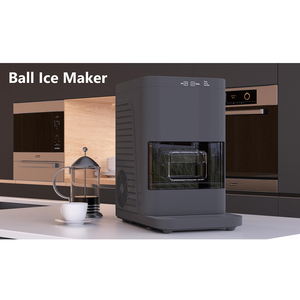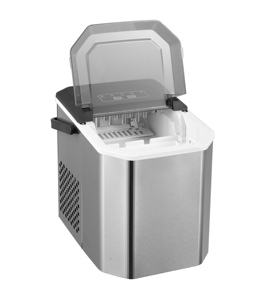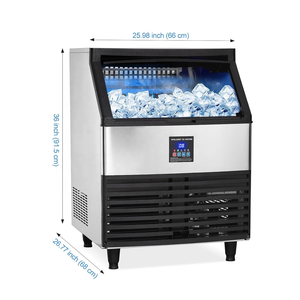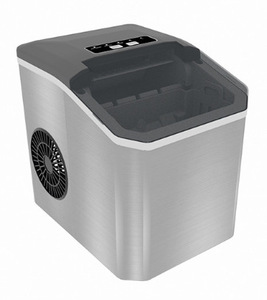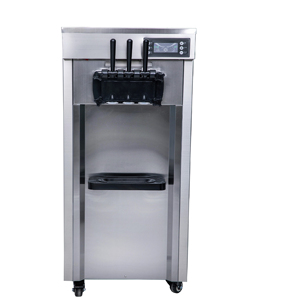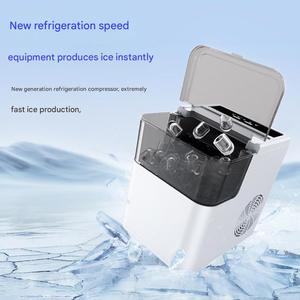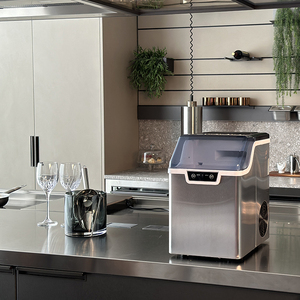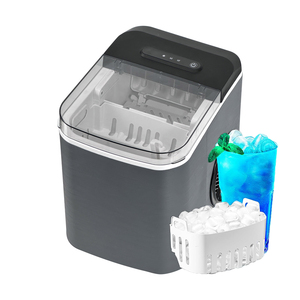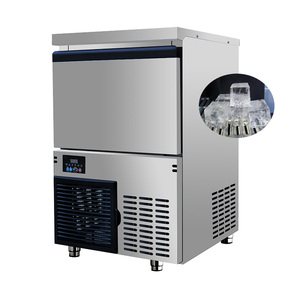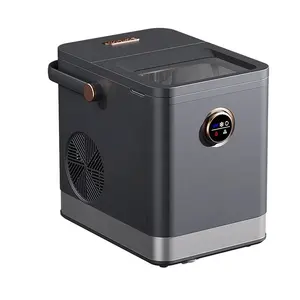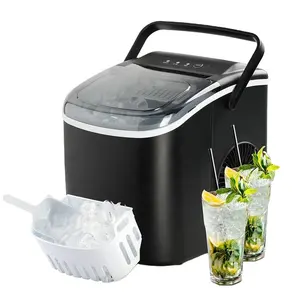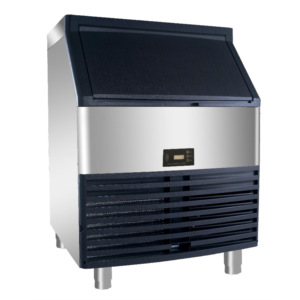Quick Ice Maker

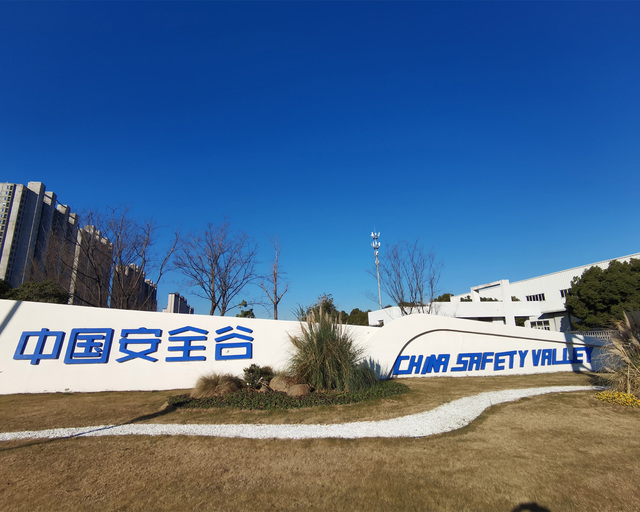




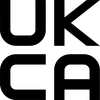



 1/41
1/41






 1/19
1/19








 1/29
1/29





 1/31
1/31



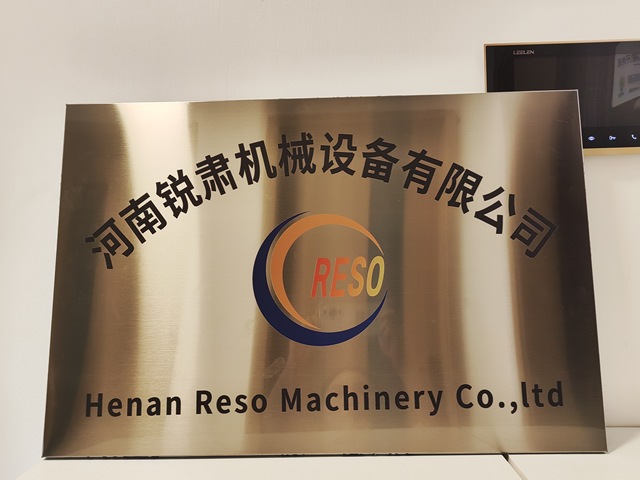








 1/3
1/3



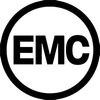


 1/21
1/21


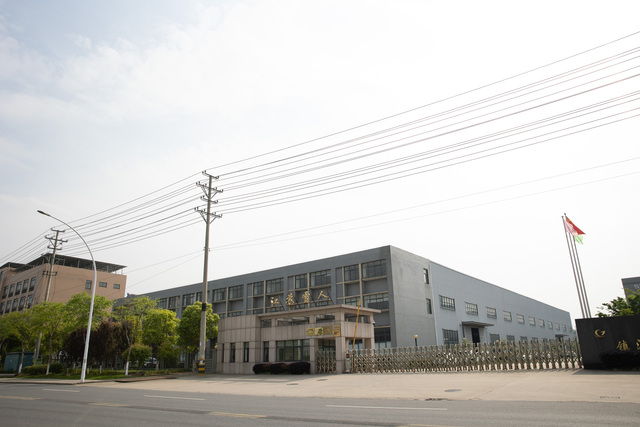










 1/28
1/28






 1/18
1/18



About quick ice maker
Where to Find Quick Ice Maker Suppliers?
China remains the central hub for quick ice maker manufacturing, with key production clusters in Zhejiang, Guangdong, and Jiangsu provinces. These regions host vertically integrated supply chains specializing in small to large-scale refrigeration equipment, enabling cost-efficient production and rapid scaling. Ningbo and Shanghai are prominent for commercial-grade units, leveraging proximity to port infrastructure for streamlined export logistics. Meanwhile, Shenzhen and Guangzhou focus on compact, consumer-oriented models with smart features, supported by dense electronics component networks.
The industrial ecosystem allows suppliers to offer a broad spectrum of ice makers—from portable countertop units producing 20–30kg per day to heavy-duty commercial machines generating over 1,000kg daily. Integrated manufacturing capabilities include injection molding, sheet metal fabrication, refrigerant charging, and final assembly, all within tightly coordinated zones. This localization reduces lead times by up to 25% compared to offshore alternatives and supports MOQs as low as one set for select models.
How to Choose Quick Ice Maker Suppliers?
Procurement decisions should be guided by structured evaluation criteria focused on technical capability, compliance, and transaction reliability.
Quality & Certification Standards
Prioritize suppliers with CE, ETL, or RoHS certifications, especially for markets in Europe and North America. These indicate adherence to electrical safety, electromagnetic compatibility, and environmental standards. For commercial applications, verify stainless steel construction (e.g., AISI 304) and IP-rated components for moisture resistance. Request test reports for compressor performance, energy consumption, and noise levels (typically 40–50 dB for residential models).
Production & Customization Capacity
Assess supplier infrastructure through key indicators:
- Minimum factory area exceeding 2,000m² for stable output
- In-house design teams supporting OEM/ODM projects
- Customization options including color, logo printing, packaging, and control panel interfaces
Confirm minimum order quantities (MOQs) ranging from 1 to 100 units depending on model complexity. Suppliers with dedicated R&D capacity typically support firmware integration and app-based controls for smart ice makers.
Supply Chain Reliability
Analyze delivery performance metrics: target on-time delivery rates above 95%. Response time under 2 hours indicates strong customer service infrastructure. Review reorder rates as proxies for client satisfaction—rates above 30% suggest consistent quality and service. Use transaction platforms to validate revenue history and dispute resolution mechanisms.
What Are the Best Quick Ice Maker Suppliers?
| Company Name | Location | Main Products | OEM Support | On-Time Delivery | Avg. Response | Online Revenue | Reorder Rate | Min. Order Flexibility |
|---|---|---|---|---|---|---|---|---|
| Xuzhou Yingse Houseware Co., Ltd. | Jiangsu, CN | Portable & Mini Ice Makers | No | 100% | ≤1h | US $40,000+ | <15% | 1 set |
| Shanghai Chuangli Refrigeration Equipment Co., Ltd. | Shanghai, CN | Commercial Half-Cube & Dry Ice Machines | Yes | 100% | ≤5h | US $16,000,000+ | 34% | 5 pieces |
| NINGBO KAISON ELECTRIC APPLIANCE CO.,LTD | Zhejiang, CN | Commercial Automatic & Heavy-Duty Units | Yes | 100% | ≤1h | US $120,000+ | 15% | 1 piece |
| Guangzhou Naixer Refrigeration Equipment Co., Ltd. | Guangdong, CN | CE/ETL-Certified Commercial & Home Models | Yes | 93% | ≤2h | US $170,000+ | 19% | 1 set |
| Shenzhen Hanjing Electronics Co., Ltd. | Guangdong, CN | Smart Countertop & Compact Cube Makers | No | 91% | ≤1h | US $10,000+ | <15% | 1 unit |
Performance Analysis
Shanghai Chuangli stands out with the highest online revenue and a 34% reorder rate, indicating strong market acceptance for its high-capacity commercial systems. NINGBO KAISON and Xuzhou Yingse offer exceptional responsiveness (≤1h) and full on-time delivery records, making them reliable for time-sensitive procurement. Guangzhou Naixer differentiates through multiple CE/ETL approvals across its product line, reducing compliance risk for international buyers. Shenzhen Hanjing provides the lowest MOQs (down to 1 unit), ideal for testing new designs or launching niche products. Suppliers with OEM capabilities allow full branding and engineering adjustments, while those without focus on standardized inventory models.
FAQs
How to verify quick ice maker supplier reliability?
Cross-check certifications (CE, ETL, RoHS) with official databases. Request factory audit reports or video tours to confirm production lines and quality control processes. Evaluate after-sales support responsiveness and warranty terms (typically 1 year). Analyze transaction history for consistency in delivery and communication.
What is the typical lead time for bulk orders?
Standard orders take 25–35 days from confirmation, depending on customization level. Fully customized OEM models may require 45–60 days for tooling, prototyping, and batch production. Air freight samples arrive in 7–10 days; sea shipping takes 20–30 days to major global ports.
Can suppliers provide custom branding and packaging?
Yes, manufacturers with OEM designation offer full customization: logo printing, color variants, user manuals, and retail-ready packaging. Minimum volumes typically start at 500 units for full branding, though some accept lower MOQs with surcharges.
Do quick ice makers comply with international electrical standards?
Top-tier suppliers produce dual-voltage models (110V/220V) with plug variants (US/EU/UK/AU). CE and ETL marks confirm compliance with European and North American safety regulations. Always confirm input voltage, frequency (50/60Hz), and power rating (typically 100–400W) match destination grid specifications.
What materials are commonly used in quick ice makers?
Food-grade plastic (ABS/PP) dominates portable units for lightweight durability. Commercial models use stainless steel (AISI 304) for evaporators, bins, and exteriors to ensure hygiene and corrosion resistance. Compressors are typically hermetic rotary or reciprocating types, paired with eco-friendly refrigerants like R134a or R600a.





